Project Collaboration
- Home /
- Categories /
- Project Collaboration
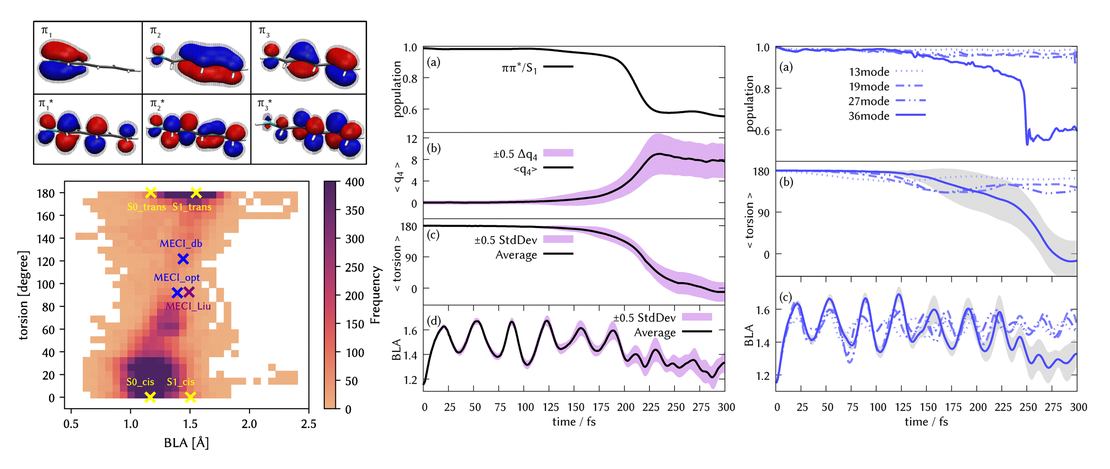
Delayed photoisomerisation of the trans-PSB3 retinal toy model using on-the-fly quantum dynamics
- María Mallo, Susana Gómez-Carrascoa and Sandra Gómez
- Publication , Project partner , Project collaboration
We explore the trans–cis photoisomerisation process in a representative retinal protonated Schiff base known as trans-PSB3, employing the quantum dynamics method direct dynamics variational multiconfigurational Gaussian -DD-vMCG- in full dimensionality, i.e., 36 degrees of freedom on potential energy surfaces computed on-the-fly using the SA(2)-CAS(6,6)SCF electronic structure method with the 6-31G basis set…
Read More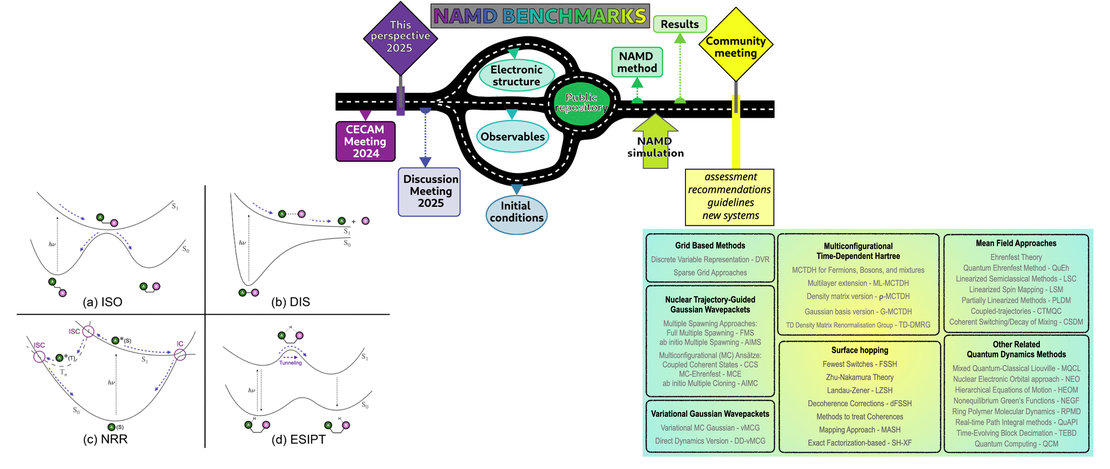
Roadmap for Molecular Benchmarks in Nonadiabatic Dynamics
- Léon L. E. Cigrang, Basile F. E. Curchod, Rebecca A. Ingle, Aaron Kelly, Jonathan R. Mannouch, Davide Accomasso, Alexander Alijah, Mario Barbatti, Wiem Chebbi, Nadja Došlić, Elliot C. Eklund, Sebastian Fernandez-Alberti, Antonia Freibert, Leticia González, Giovanni Granucci, Federico J. Hernández, Javier Hernández-Rodríguez, Amber Jain, Jiří Janoš, Ivan Kassal, Adam Kirrander, Zhenggang Lan, Henrik R. Larsson, David Lauvergnat, Brieuc Le Dé, Yeha Lee, Neepa T. Maitra, Seung Kyu Min, Daniel Peláez, David Picconi, Zixing Qiu, Umberto Raucci, Patrick Robertson, Eduarda Sangiogo Gil, Marin Sapunar, Peter Schürger, Patrick Sinnott, Sergei Tretiak, Arkin Tikku, Patricia Vindel-Zandbergen, Graham A. Worth, Federica Agostini, Sandra Gómez, Lea M. Ibele and Antonio Prlj
- Publication , Project collaboration , Perspective
Simulating the coupled electronic and nuclear response of a molecule to light excitation requires the application of nonadiabatic molecular dynamics. However, when faced with a specific photophysical or photochemical problem, selecting the most suitable theoretical approach from the wide array of available techniques is not a trivial task…
Read More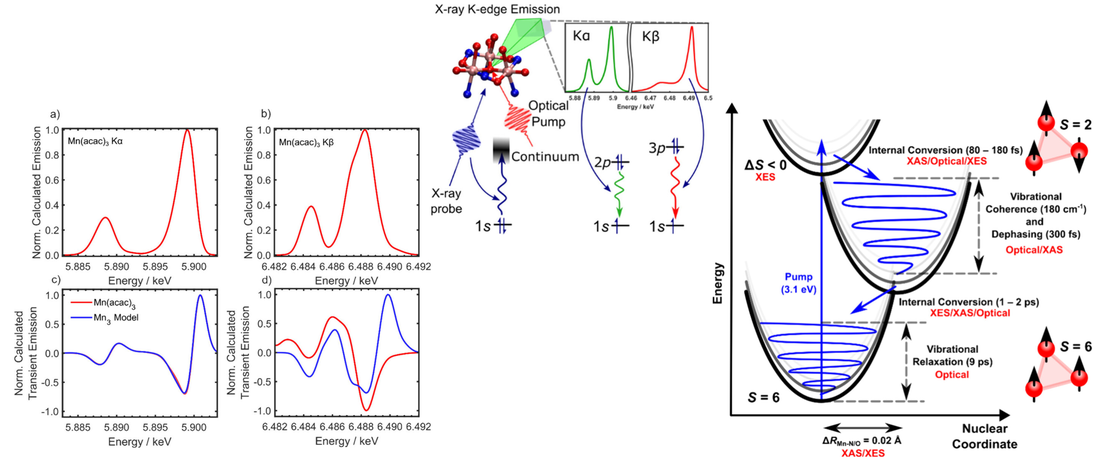
Capturing Ultrafast Spin Dynamics in Single-Molecule Magnets Using Femtosecond X‑ray Emission Spectroscopy
- Kyle Barlow, Ryan Phelps, Julien Eng, Rebecca A. Ingle, Dmitry Khakhulin, Mykola Biednov, Sharmistha Paul Dutta, Yifeng Jiang, Frederico A. Lima, Vandana Tiwari, Christopher Milne, Tetsuo Katayama, Marco Coletta, Euan K. Brechin, Thomas J. Penfold and J. Olof Johansson
- Publication , Project collaboration
Achieving ultrafast photomagnetic switching of single-molecule magnets (SMMs) could lead to simultaneous fast and dense data storage devices. To facilitate this, a thorough understanding of the ultrafast dynamics emerging after ultrashort laser pulse excitation is essential. However, the complex nature of these materials means there is a lack of established experimental techniques that can probe the spin dynamics in SMMs…
Read More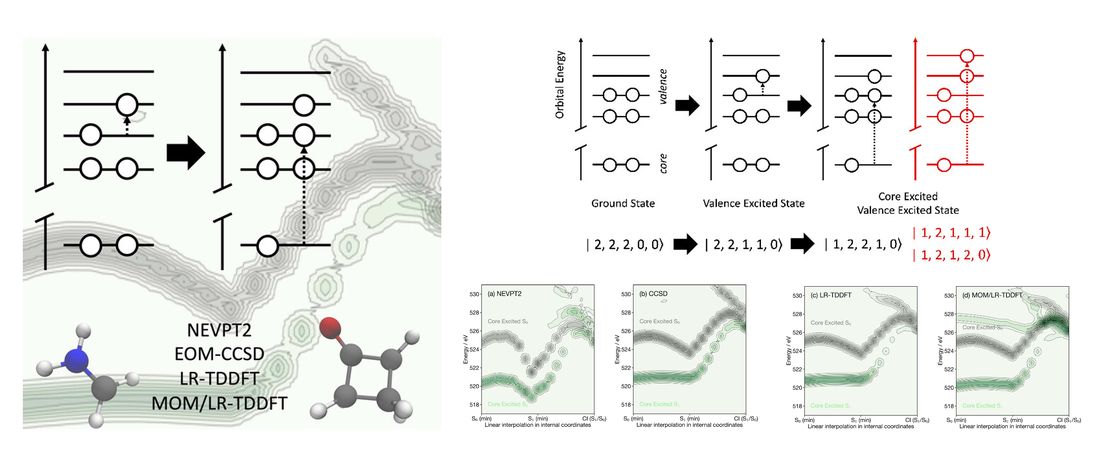
Exploring the Influence of Approximations for Simulating Valence Excited X‑ray Spectra
First-principles simulations of excited-state X-ray spectra are becoming increasingly important to interpret the wealth of electronic and geometric information contained within femtosecond X-ray absorption spectra recorded at X-ray Free Electron Lasers (X-FELs). However, because the transition dipole matrix elements must be calculated between two excited states (i.e., the valence excited state and the final core excited state arising from the initial valence excited state) of very different energies, this can be challenging and time-consuming to compute…
Read More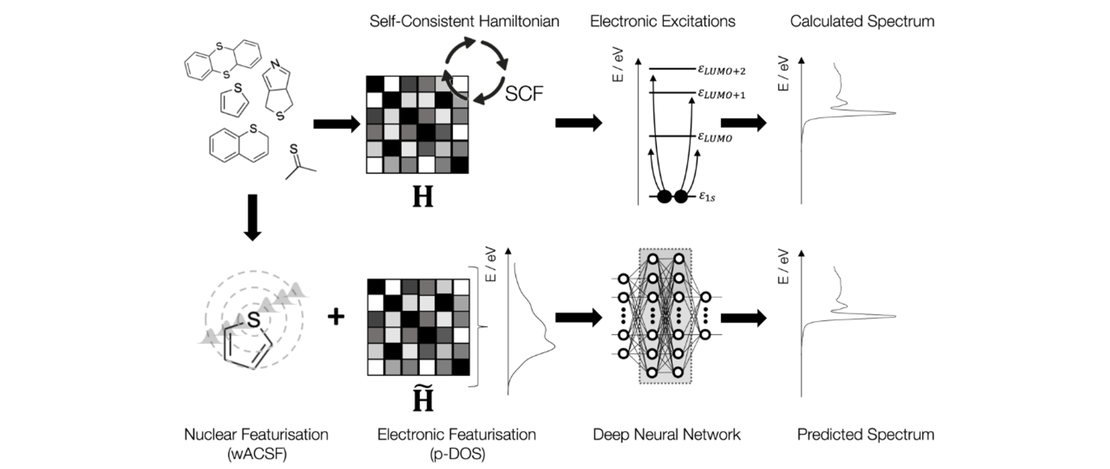
Partial Density of States Representation for Accurate Deep Neural Network Predictions of X-ray Spectra
The performance of a Machine Learning (ML) algorithm for chemistry is highly contingent upon the architect’s choice of input representation. This work introduces the partial density of states (p-DOS) descriptor: a novel, quantuminspired structural representation which encodes relevant electronic information for machine learning models seeking to simulate X-ray spectroscopy…
Read More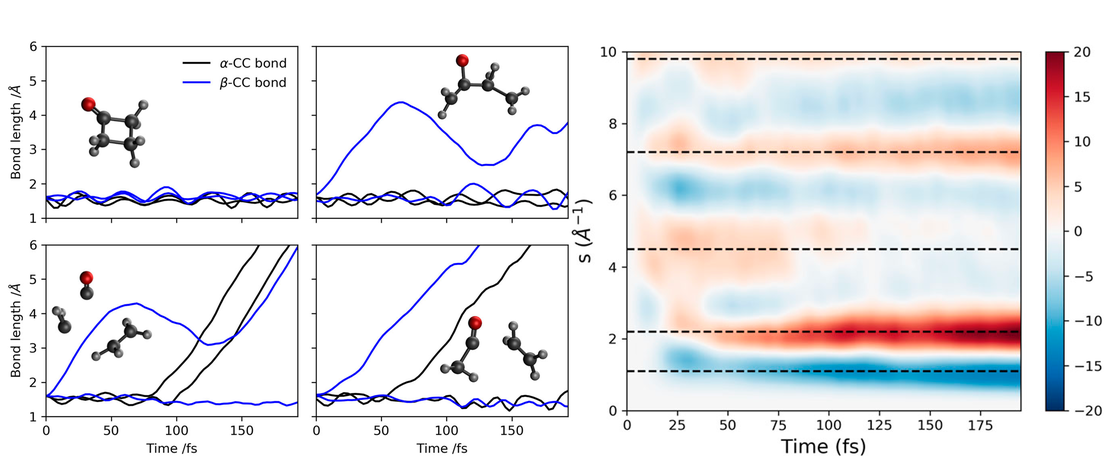
Ultrafast electron diffraction of photoexcited gas-phase cyclobutanone predicted by ab initio multiple cloning simulations
- Dmitry V. Makhov, Lewis Hutton, Adam Kirrander and Dmitry Shalashilin
- Publication , Prediction challenge , Project collaboration
We present the result of our calculations of ultrafast electron diffraction (UED) for cyclobutanone excited into the S2 electronic state, which is based on the non-adiabatic dynamics simulations with the Ab Initio Multiple Cloning (AIMC) method with the electronic structure calculated at the SA(3)-CASSCF(12,12)/aug-cc-pVDZ level of theory…
Read More